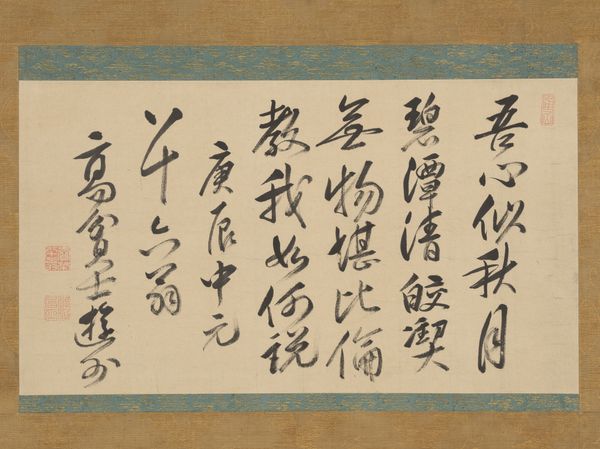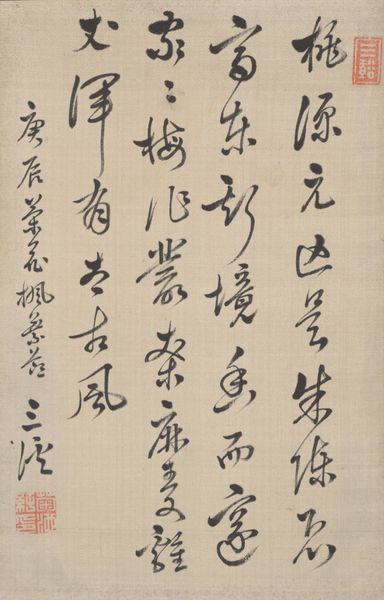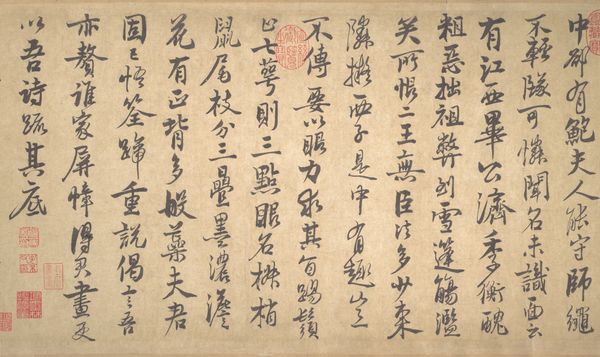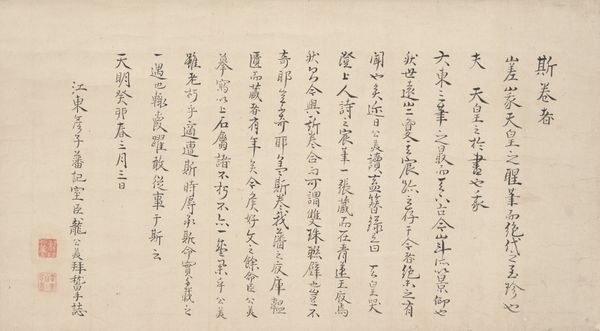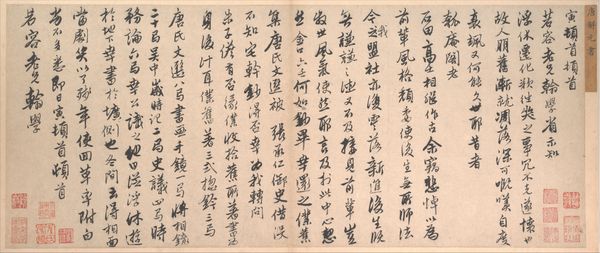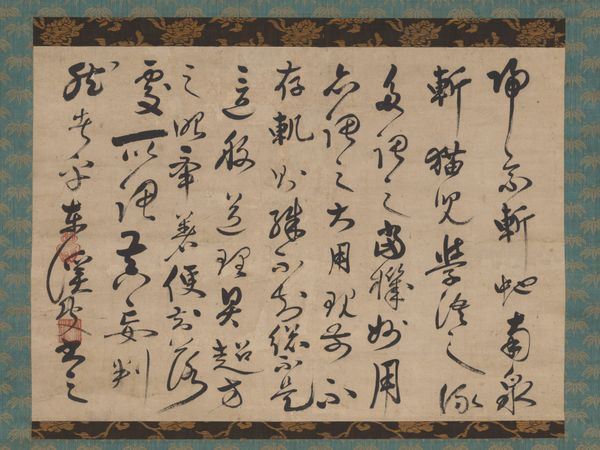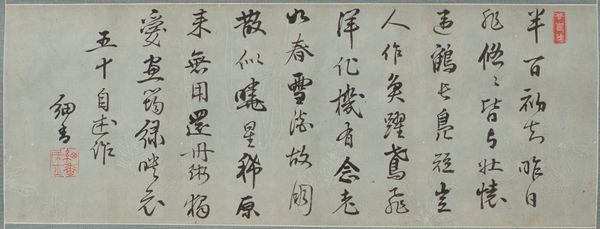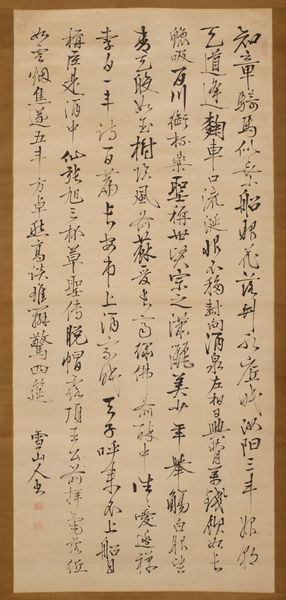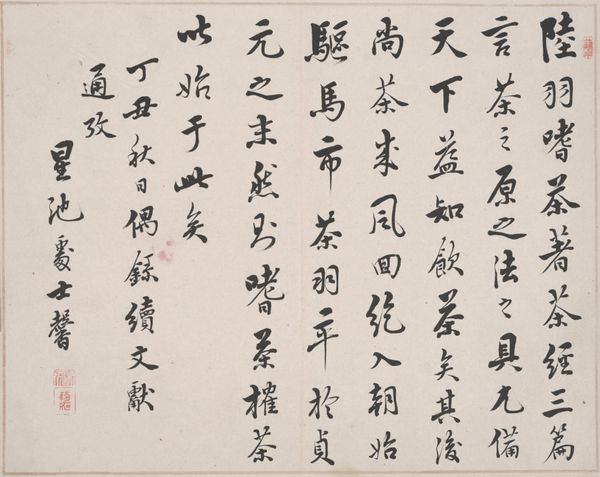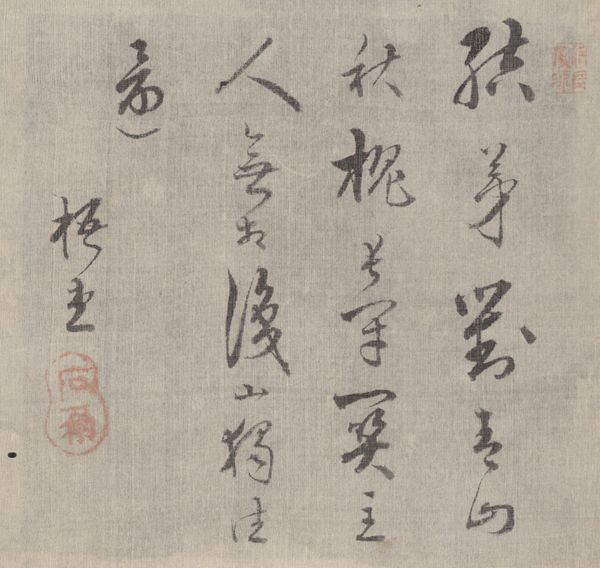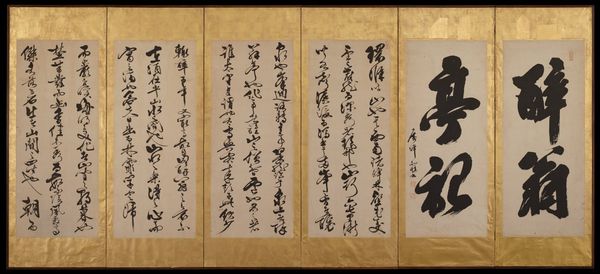
Poem Accompanying an Over Robe (Uchikake) with Bamboo by Gion Nankai (1677–1751) 1824
0:00
0:00
paper, ink
#
asian-art
#
japan
#
paper
#
ink
#
calligraphic
#
calligraphy
Dimensions: 11 7/8 x 116 3/4 in. (30.2 x 296.5 cm)
Copyright: Public Domain
This calligraphic scroll, created by Rai San’yō in the 19th century, features classical Chinese script, a potent symbol of learnedness and cultural continuity in East Asian societies. These characters are not merely words; they are visual embodiments of philosophical and aesthetic ideals. Consider the recurring motif of bamboo—often paired with calligraphy—representing resilience and moral integrity. Bamboo appears throughout East Asian art history, from ancient paintings to contemporary designs. Its symbolic weight is rooted in its ability to bend without breaking, a testament to strength in adversity. This echoes the Laocoön Group; a motif of intertwined figures from classical antiquity representing struggle and the human condition, which reappears through the ages. The very act of writing with ink becomes a ritual, invoking the spirit of past masters. The brushstrokes themselves convey the artist’s inner state, engaging viewers on a deeply personal level, a silent communion across time and space. This interplay between visual symbol and textual meaning exemplifies the cyclical nature of cultural memory, where ancient wisdom resurfaces and evolves in new contexts, constantly reshaping our understanding of the human experience.
Comments
No comments
Be the first to comment and join the conversation on the ultimate creative platform.
